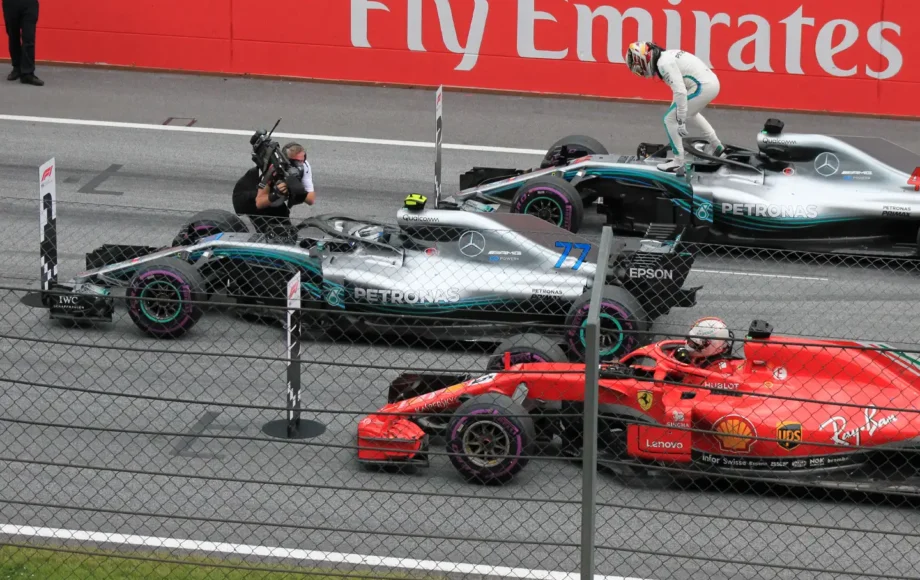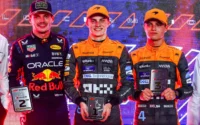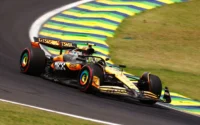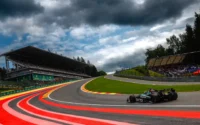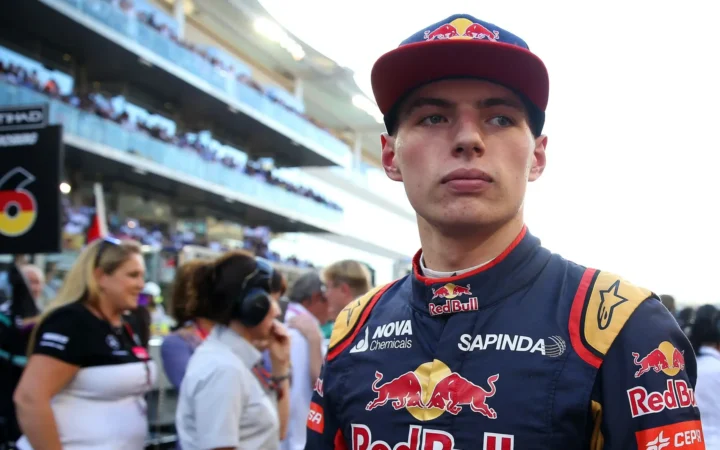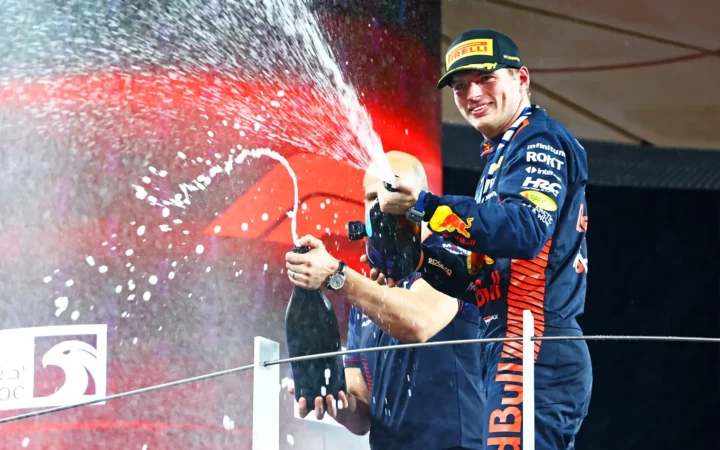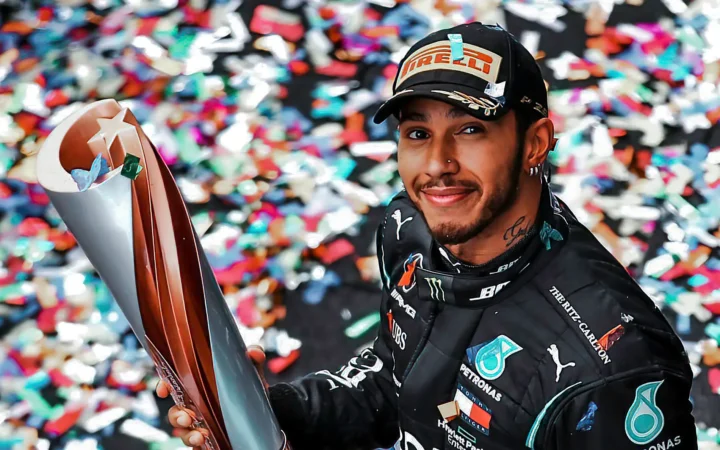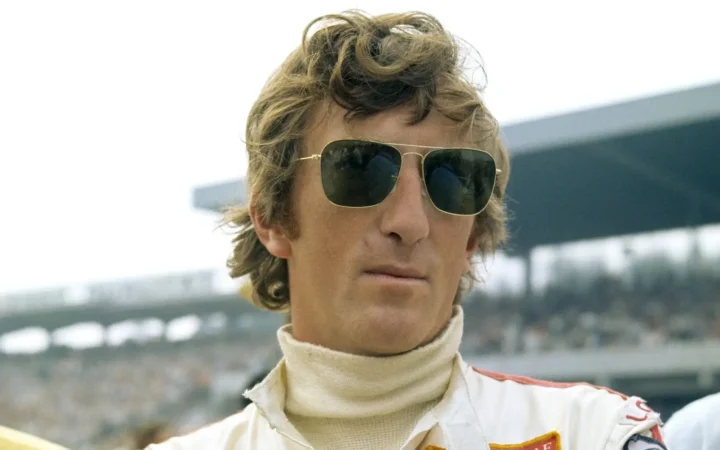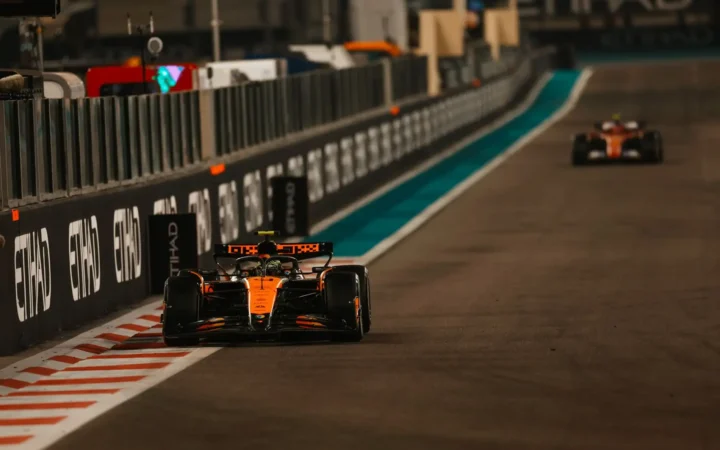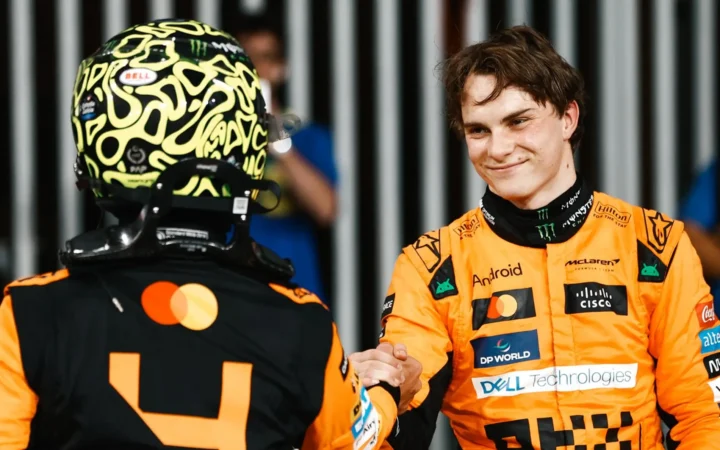F1 brings together the world’s top racing teams and drivers to battle for two championships, the Drivers’ and the Constructors’. As well as championships up for grabs, there are race wins, but before all of these, there is a session on the race weekend called qualifying.
While the format has changed slightly over the years, they all share the same DNA: to be the fastest over one lap.
What is F1 qualifying?
F1 qualifying is when teams and drivers can showcase their raw pace, with minimal fuel loads, engines cranked up to the max, and fresh tyres to eke out every last bit of speed from a car to place as high up the leaderboard and to determine the starting grid for the race. It sets the stage for the main event, and will shape how teams strategies play out depending on how far up their divers got. Qualifying can play a pivotal role in the final outcome when the chequered flag is waved.
Quali gives drivers a platform to push their cars to the limit, with every one of them after the coveted pole position. Lining up first on the grid gives drivers a bigger advantage of approaching turn 1 incident-free and minimising the risk of being caught in the chaos that can erupt behind. Although that’s not to say there haven’t been many dramatic turn-1 incidents with the pole sitter.
Over the years, qualifying has evolved. From its humble beginnings, when drivers set their best lap times to secure their positions on the grid, to the modern era of knockout-style sessions, where the slowest drivers are eliminated in stages, the format has seen big changes. These transformations have been driven by ideas from the FIA, Formula 1 and teams to enhance the spectacle for fans and level the playing field up and down the grid.
In this exploration of F1 qualifying, we will look into the various formats and rule changes that have shaped this part of the race weekend, from the introduction of the 107% rule to the era of one-shot qualifying and the recent hybrid format.
Early years of F1 qualifying
During the first Formula 1 season in 1950, qualifying was relatively straightforward. Drivers had a limited time window to set their fastest lap times, usually with only one opportunity. This meant that a single error or mechanical issue could affect a driver’s grid position for the race. The focus was on individual performance, where it was just the driver and car, without the aid of advanced technology and telemetry systems we see today.
Qualifying and races at this time were fraught with danger. Drivers wrestled with powerful, often unforgiving cars on tracks that lacked today’s safety features, and the margin for error was razor-thin. Still, several legends of the sport became known for their speed in qualifying, with names like Juan Manuel Fangio, Alberto Ascari, and Nino Farina able to tame their machines and place them on pole more often than most.
The 1957 German Grand Prix at the Nürburgring saw one such example with Fangio, driving for Maserati, qualify on pole despite suffering from severe neck pain. Despite the pain, he also went on to win the race, which is often thought of as one of his greatest wins.
The early years of Formula 1 qualifying were raw, boiling down to man and machine and how brave they were to push them. It was also a time when the sport was still finding its footing, and as Formula 1 continued to evolve, so did the qualifying format.
107% rule qualifying
F1 rules and regulations are constantly changing, from safety to sweeping formula rules that can completely change every component of engines and cars. One big change by the FIA came into effect during the early 1990s when the 107% rule was introduced.
The 107% rule was designed to address two key issues in Formula 1: to ensure a minimum level of competitiveness among teams and to enhance safety during race weekends. The rule stated that a driver must set a lap time within 107% of the fastest time set during the first qualifying session to be eligible to participate in the race. This meant drivers whose cars were considerably slower risked being excluded from the race due to being unable to meet this time threshold.
Impact on F1 qualifying sessions
The 107% rule added excitement for fans but tension up and down the garages as teams worked hard to make sure their cars were within the required performance range. The rule discouraged teams from sending out poorly prepared or uncompetitive cars, as failing to make the 107% cutoff could result in missing the race entirely.
From a competitive standpoint, the 107% rule forced teams to improve their cars’ performance. It acted as a motivating factor for innovation and development. This was particularly significant for smaller teams with limited budgets, as it encouraged them to invest in these areas to bridge the performance gap.
With the 107% rule in place, the likelihood of extremely slow or unreliable cars reaching the race was reduced, which aimed to create safer race weekends with a more consistent and competitive field.
Memorable incidents
While the 107% rule played a its role in maintaining safety and competitiveness, it was not without its controversies. One notable incident was at the 1992 Monaco Grand Prix when Ayrton Senna, a three-time world champion, failed to meet the 107% requirement due to technical issues with his McLaren. The race organisers made an exception and allowed Senna to start from the back of the grid, showcasing the rule’s flexibility in exceptional circumstances.
One-shot qualifying
In the early 2000s, Formula 1 changed its qualifying format to one-shot qualifying. This format was introduced to inject more excitement and unpredictability into the qualifying sessions, but it had its own pros and cons and critics.
The format
One-shot qualifying, also known as the single-lap shootout, was a departure from the traditional qualifying format that fans had become accustomed to. Under this system, each driver had only one opportunity to set a fast lap time. The previous race’s results determined the running order for this single lap, with the slowest driver going first and the fastest going last.
With just one lap drivers had to deliver a perfect lap without any margin for error. They had to contend with the challenges of track conditions, tyre temperature, and the pressure of a single lap.
Pros:
- Increased Drama: One-shot qualifying injected drama into each session. The one-and-done format meant that every lap counted, and mistakes were costly.
- Strategy: Teams had to carefully plan their timing within the session, deciding when to send their drivers out to get the best track conditions. This added a depth to the sport fans hadn’t experienced before.
Cons:
- Reduced Track Action: One-shot qualifying had the unintended consequence of reducing the amount of on-track action. With only one lap per driver, there were long periods of inactivity between cars, which was less engaging for fans.
- Unpredictable Results: While the format aimed to increase unpredictability, it sometimes led to less competitive cars starting higher up the grid. A single fast lap could be influenced by factors like track position, weather, or mechanical issues, which didn’t always reflect the true performance of the cars.
Several drivers stood out during the era of one-shot qualifying. One name that frequently comes up is Michael Schumacher, who was able to deliver repeatedly under pressure. Schumacher’s ability to extract the maximum performance from his car in a single lap made him a formidable force during one-shot qualifying sessions.
Others like Kimi Räikkönen and Juan Pablo Montoya also excelled in this format. Räikkönen, known for his “Iceman” demeanour, was adept at maintaining composure and setting blistering laps when it mattered most.
So, while it had its drawbacks, such as less on-track action and unpredictable results, it did showcase the exceptional talents of some drivers who could perform better than others.
Knock-out qualifying
In 2016, Formula 1 reverted to a more traditional qualifying format, ending the often criticised one-shot qualifying. It was a decision driven by the FIA and Formula 1 to reinvigorate the excitement and competitiveness of qualifying sessions and address the drawbacks of one-shot qualifying.
Under a more traditional format, quali now featured three sessions: Q1, Q2, and Q3. In Q1, all cars competed to set their fastest times, with the slowest drivers eliminated at the end of the session. The exact process was repeated in Q2, with more eliminations. Q3, the final session, featured the top drivers fighting for pole position. This format has proven successful in the past, offering more excitement and showcasing the true pace of the cars and drivers.
| Session | Length | Drivers Eliminated |
|---|---|---|
| Q1 | 18 minutes | 5 Slowest |
| Q2 | 15 minutes | 5 Slowest |
| Q3 | 12 minutes | n/a |
The return to traditional knockout-style qualifying had several positive effects on Formula 1. It increased on-track action and excitement for fans as drivers fought to avoid being knocked out in each session. The format also provided a more accurate representation of the relative performance of the teams and drivers.
Returning to a more traditional format produced some of the most memorable and thrilling qualifying sessions in recent years. One standout example is the 2017 Azerbaijan Grand Prix. In a dramatic Q3 session, multiple red flags and incidents disrupted the flow, creating chaos on the streets of Baku. Ultimately, Lewis Hamilton capitalised on the disorder to snatch pole position in the final seconds. Another that featured Hamilton was at the 2020 Tuscan Grand Prix at Mugello. The circuit’s challenging layout and multiple red flags in Q2 led to an intense showdown in Q3. Valtteri Bottas emerged as pole sitter, narrowly edging out his teammate Lewis Hamilton.
The decision to return to traditional knockout-style qualifying rejuvenated Formula 1’s qualifying sessions and finally addressed the shortcomings of the previous formats.
Hybrid qualifying
Before knock-out qualifying took off, as we see it today, Formula 1 experimented with a hybrid qualifying idea at the beginning of 2016.
Despite the criticisms surrounding one-shot qualifying, F1 didn’t want to abandon it completely and return to a more traditional knockout system. Instead, they introduced a hybrid qualifying format, balancing the unpredictability of one-shot qualifying with the familiarity of traditional knockout-style sessions. Similar to the knock-out format, quality was made up of three sessions: Q1, Q2, and Q3. However, there was a key twist.
In Q1 and Q2, there would still be a session length, and drivers would still aim to set their fastest laps, but in the hybrid model, instead of the session ending with the elimination of the slowest drivers, it featured a rolling elimination system. At a certain point during Q1 and Q2, the slowest drivers would start to be knocked out, creating a sense of urgency to set a faster time earlier on.
The idea was to keep the action flowing during Q1 and Q2 while retaining the excitement of eliminations in one-shot qualifying. In the final session, Q3, the traditional knockout-style format was maintained, allowing the top drivers to compete for pole position.
The reception of the hybrid qualifying format was mixed at best. Many fans and teams were initially optimistic about the changes. However, as the 2016 season progressed, it became clear that the hybrid format did not live up to its hype. It led to a confusing format that wasn’t great for fans to follow, and it was ultimately abandoned after two races into the 2016 season, returning to the traditional knockout-style qualifying.
Sprint Races and Sprint Qualifying
Highly anticipated, the F1 Sprint Race, previously trialled in 2021, is now a permanent fixture throughout the season and has become a thrilling addition that provides F1 fans at home and the track with more action-packed racing during the weekend.
Like the main race, each Sprint Race has a qualifying session called a Sprint Shootout. While drivers can earn championship points in the Sprint Race, they no longer determine the grid for Sunday’s Grand Prix as they did in 2022. This had been a controversial rule for fans, drivers, and teams. Instead, F1 reintroduced a traditional qualifying session that took place on Friday afternoons, replacing the Second Practice Session.
How does F1 Sprint qualifying work?
The Sprint Shootout, previously known as Sprint Qualifying, is the qualifying session that determines the starting positions for the Sprint Race.
During the Sprint Shootout, each driver has a limited time to set their fastest lap. The driver who sets the fastest lap time will start the Sprint Race from pole position. The second-fastest in second, the third-fastest in third, and so on until all 20 drivers are placed on the grid.
This format is similar to traditional qualifying, with Q1, Q2, and Q3 of 18, 15, and 12 minutes. Sprint qualifying has SQ1, SQ2, and SQ3, each with shortened durations of 12, 10, and 8 minutes.
The format changed again for the 2024 season. The Sprint Shootout, and the only practice session of the weekend, took place on Friday after FP1. The Sprint Race and Grand Prix Race Qualifying followed on Saturday, and the main Grand Prix race on Sunday. The sessions, their length, and the elimination process remained unchanged.
| Day | First Session | Second Session |
|---|---|---|
| Friday | FP1 | Sprint Shootout – SQ1, SQ2 and SQ3 |
| Saturday | Sprint Race | Grand Prix Qualifying – Q1, Q2 and Q3 |
| Sunday | Grand Prix | n/a |
While the Sprint Race format is still relatively new, it has generated a lot of interest and has the potential to become a permanent fixture in the Formula 1 calendar. The condensed format and shorter distance have been designed to set the scene for the main race.
As for the future, F1 seem keen to continue the format and has listened to the feedback from teams and fans by making adjustments. These ongoing changes allow for adjustments and improvements to be made to make sure that the Sprint Race remains relevant.
More on Sprint Races
Qualifying innovations and technology
While qualifying formats have changed over the decades, teams have found ways to help their drivers find an edge.
One of the most significant advancements in recent years is the use of simulators. These simulators are incredibly accurate and allow drivers to virtually test different setups and scenarios before hitting the track. Simulators also give teams critical data to fine-tune their cars, experiment with aerodynamic settings, and play with tyre strategies. It gives drivers the opportunity to familiarise themselves with a track in the hope of giving them the extra confidence to push for those extra milliseconds on qualifying day,
Data analysis has come a long way in the past few decades, as well as data from simulators. Teams collect and analyse vast amounts of data from every session, and this wealth of information directly impacts qualifying performance. Advanced telemetry provides real-time data on things such as tyre temperatures, and engine performance giving the trackside engineers and mechanics data to work with and influence a cars balance during qualifying.
Rule changes by the FIA and Formula 1 have also influenced qualifying with systems like DRS. The introduction of the Drag Reduction System (DRS) in 2011 allowed drivers to adjust the angle of their car’s rear wing, reducing drag on straights. This innovation has allowed for quicker qualifying times to be set. When a team nails the design of their DRS, it can boost the cars top speed from anywhere between 10 and 30kph. Get it right, and a car can be faster than anyone else on the grid.
Another notable innovation includes the “party mode” in engine settings, often associated with the Mercedes-AMG Petronas Formula One Team. This mode, available for a brief period during qualifying, provides an extra burst of engine power, resulting in faster lap times.
Future of F1 Qualifying
So, what will the future hold for Formula 1 qualifying? Anything is possible as technology and F1’s global reach change; maybe we’ll see some sort of fan participation or influence in the future. However, one thing is certain. The magic of watching drivers and teams shoot for pole position, but maybe some fan participation might become a thing.
For the latest F1 standings, check out the most recent race results or look back into F1 history at noteworthy achievements of drivers and constructors with all-time F1 records.

